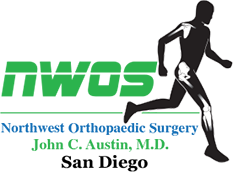PRP Injection
Blood contains cells (Red and White Blood Cells), Platelets (which have lots of growth and healing factors), and Plasma (the liquid part of blood). Growth Factors encourage healing and repair of damaged tissue. Platelet Rich Plasma (PRP) is prepared by taking the patient’s blood and separating the red and white blood cells from the platelets and plasma. The platelets and plasma (containing the healing/growth factors) are then injected into the site of injury in an effort to create an accelerated and optimized local healing environment.
PRP has been used in other medical areas for years, although it is a relatively new treatment option for musculoskeletal injuries. Orthopaedic data regarding PRP primarily involves small treatment groups at this time, although many orthopaedic studies involving PRP are currently underway and new data is constantly emerging. PRP shows promise for certain acute and chronic orthopaedic injuries and conditions.
PRP Facts
Blood draw: The patient’s own blood is drawn in the office and is exclusively used to prepare the PRP injection. Since only autologous blood products (originating only from the patient) are used, there is no transfusion risk.
Procedure Preparation: In an effort to minimize excessive bleeding, do not take any blood thinners including aspirin or NSAIDS (Ibuprofen, naproxen, meloxicam) for 7 days prior to the procedure. Patients taking prescription blood thinners (including Coumadin, warfarin, Plavix, Arixtra) for cardiac conditions and/or stroke prevention are not candidates for PRP injection. The procedure takes approximately 30-45 minutes. Most of the time involves preparation work for the PRP injection, and the injection itself is relatively brief. Approximately 12 mL of the patient's blood is drawn from a vein. The blood is spun in a centrifuge to separate the cells from the platelets and plasma in a special syringe. Approximately 4-5 mL of the PRP (Platelets and plasma) is injected into the injured area. Local anesthetics cannot be used as they can disrupt the healing potential of the PRP preparation.
Possible Complications
Pain and stiffness of variable intensity and duration is common following the procedure. Tylenol is used for mild pain, and short courses of narcotics may be required for more significant pain. The pain usually peaks at approximately 2-3 days following the procedure. Activity modification including time off from work and/or modified duty may be required for a short period of time. Severe pain or pain lasting several weeks can occur on occasion and may be a part of the normal healing response in more significant injuries.
- Bruising is usually minor and is usually related to the injection itself
- Infection is rare as sterile equipment and techniques are used.
- Tendon rupture is very uncommon. This may be related to symptom improvement following injection (and subsequent overuse), or continued progression of advanced tendon disease despite the injection.
- No response to the injection may occur in 20% (or more) of patients based on the current Results are likely affected by many factors including nutritional status at the time of the blood draw (quantity and quality of growth factors present in PRP) and genetic makeup (growth factor production is also affected by the individual’s unique DNA, which is the blueprint for proteins including growth factors that are made in the body). As such, a healthy diet rich in vegetables, fruits, and appropriate quantities of protein, adequate hydration, and maintenance of an active lifestyle may help to improve PRP quality prior to the procedure.
Following the procedure
Do not take Aspirin or NSAIDS (Ibuprofen, naproxen, meloxicam) for 2 weeks following PRP injection. Relative rest and gentle, limited movement of the affected area is advised for 1-3 days following the procedure. If there is little or no change following the first PRP injection, a second injection may still result in significant improvement (especially if diet and activity were not optimized for the first injection). Other factors that influence the effectiveness of PRP injection include, but are not limited to: Platelet/serum growth factor levels, age, tobacco use, general health, adherence to the post-PRP rehabilitation protocol, and avoidance of overuse of the affected area following PRP injection.
Cost
Insurance companies do not cover PRP injections at this time. This may change in the future as more studies evaluating the effectiveness of PRP for specific orthopaedic injuries and conditions are published. We can provide you with a detailed invoice of the cost of a PRP injection upon request.









